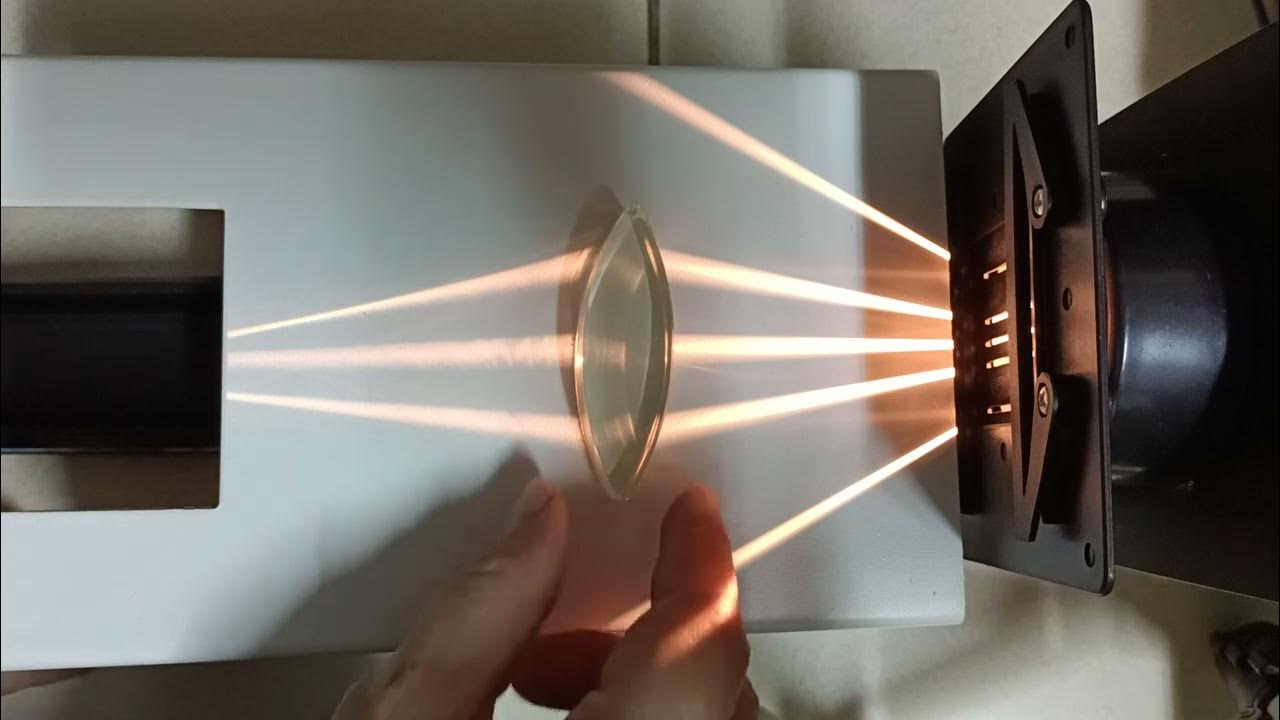Light - Reflection & Refraction FULL CHAPTER in Animation | NCERT Science | CBSE Class 10 Chapter 1
Summary
TLDRThis video explores the reflection and refraction of light, detailing how light behaves when interacting with mirrors and lenses. It covers the principles of reflection in plane and spherical mirrors, the formation of virtual and real images, and the laws of refraction, including Snell's Law. The script also introduces concepts like refractive index, magnification, and the power of lenses, explaining how convex and concave lenses affect light. Practical examples are provided, such as how objects appear distorted under water or in lenses, giving viewers a clear understanding of these fundamental optical phenomena.
Takeaways
- 😀 Light is a form of energy that travels in a straight line and can undergo reflection and refraction.
- 😀 Reflection of light occurs when a light ray strikes a smooth surface like a mirror and bounces back.
- 😀 A mirror's reflective surface allows us to see images, and the size of the image in a plain mirror is the same as the object.
- 😀 The images formed by plain mirrors are laterally reversed (left-right reversed).
- 😀 Spherical mirrors, such as concave and convex mirrors, have curved reflective surfaces and can form real or virtual images.
- 😀 The focal length of a spherical mirror is half of its radius of curvature (R = 2F).
- 😀 Ray diagrams are used to determine image position and characteristics for spherical mirrors based on object placement.
- 😀 Concave mirrors are used for applications like shaving mirrors and flashlight reflectors, while convex mirrors serve as rearview mirrors.
- 😀 Refraction is the bending of light as it passes from one medium to another, changing its speed and direction.
- 😀 Snell's law describes the relationship between the angles of incidence and refraction and helps calculate the refractive index of materials.
- 😀 Lenses, including convex (converging) and concave (diverging) lenses, manipulate light to form real or virtual images depending on the object distance.
- 😀 The power of a lens is inversely proportional to its focal length (P = 1/F), and it is measured in diopters (D).
Q & A
What is reflection of light?
-Reflection of light is the phenomenon where light bounces off a smooth, polished surface, like a mirror, when it strikes it. This is how we are able to see images in mirrors.
What is refraction of light?
-Refraction of light occurs when light passes from one medium to another, causing a change in its speed and direction. This bending of light is observed when a straw in a glass of water appears bent.
What are the two types of spherical mirrors?
-The two types of spherical mirrors are convex mirrors, which have an outward-curved reflective surface, and concave mirrors, which have an inward-curved reflective surface.
How does the principal focus of concave and convex mirrors differ?
-For a concave mirror, the principal focus is the point where parallel light rays converge after reflection, while for a convex mirror, the principal focus is a virtual point from which the reflected rays appear to diverge.
What is the relationship between the focal length and the radius of curvature in a spherical mirror?
-The relationship is given by the equation R = 2F, where R is the radius of curvature and F is the focal length of the mirror.
What is the significance of the magnification of an image?
-Magnification is the ratio of the image size to the object size. It is a measure of how much larger or smaller the image appears compared to the object.
What is Snell's law of refraction?
-Snell's law states that the ratio of the sine of the angle of incidence to the sine of the angle of refraction is constant for a given pair of media. This is expressed as sin(i) / sin(r) = constant.
What is the difference between a convex lens and a concave lens?
-A convex lens is thicker at the center and focuses light rays to a single point, while a concave lens is thinner at the center and causes light rays to diverge.
What is the power of a lens, and how is it calculated?
-The power of a lens is a measure of its ability to bend light. It is calculated using the formula P = 1/F, where P is the power in diopters, and F is the focal length in meters.
Why do concave mirrors form virtual images when the object is placed between the pole and the focus?
-When the object is placed between the pole and the focus of a concave mirror, the reflected rays diverge, and the image appears to be formed behind the mirror, creating a virtual and erect image.
Outlines

This section is available to paid users only. Please upgrade to access this part.
Upgrade NowMindmap

This section is available to paid users only. Please upgrade to access this part.
Upgrade NowKeywords

This section is available to paid users only. Please upgrade to access this part.
Upgrade NowHighlights

This section is available to paid users only. Please upgrade to access this part.
Upgrade NowTranscripts

This section is available to paid users only. Please upgrade to access this part.
Upgrade NowBrowse More Related Video

Physical and Geometric Optics (AP Physics 2)

Difference between Reflection,Refraction, and Diffraction

LIGHT: REFLECTION AND REFLACTION 💡 Science for Kids ⚡ Part 2 🌈

Pemantulan dan Pembiasan Cahaya dengan KIT OPTIK

Images Formed on Mirrors and Lenses | Grade 10 Science DepEd MELC Quarter 2 Module 4

Pembiasan Cahaya Lensa Cembung dan Lensa Cekung
5.0 / 5 (0 votes)